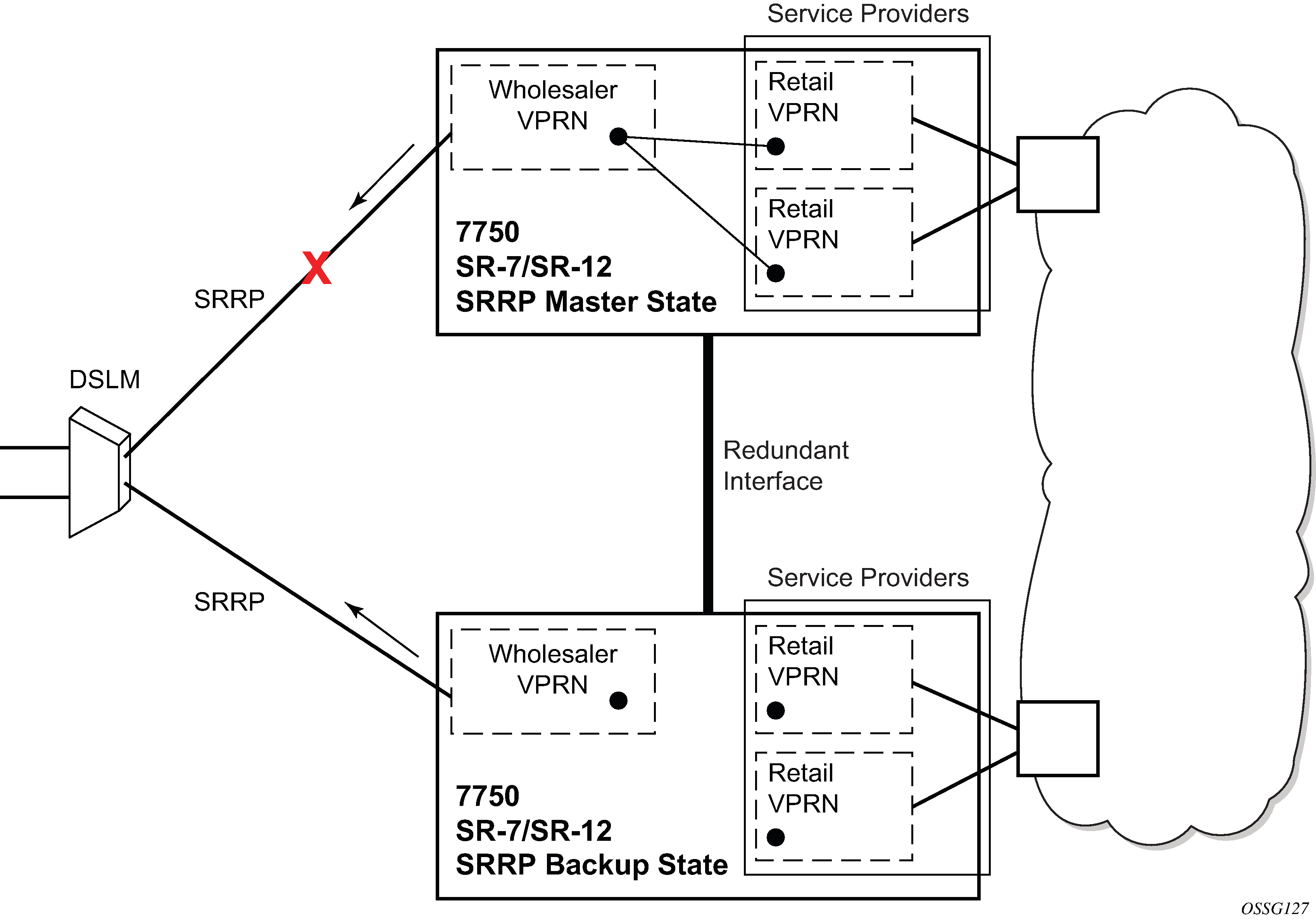Subscriber Router Redundancy Protocol (SRRP) allows two separate connections to a DSLAM to operate in an active/standby fashion similar to how VRRP interfaces operate. Because the SRRP state is associated with the group interface, multiple group interfaces may be created for a specific port so some of the SAPs are active in one node and others active on the other node. While each SRRP pair is still allowed to be active/backup, the described configuration is allowed for load balancing between the nodes. In a failure scenario, subscriber bandwidth is affected. For more information about SRRP, see the Subscriber Routed Redundancy Protocol chapter.
If SRRP is configured before the redundant interface is up, and in backup state the router forwards packets to the access node using the backup interface but does not use the gateway MAC address. This applies to failures in the redundant interface as well. If the redundant interface exists and up the router sends downstream packets to the redundant interface and not use the backup group interface.
In a dual homing architecture the nodes must be configured with SRRP to support redundant paths to the access node. The nodes must also be configured to synchronize subscriber data and IGMP state. To facilitate data forwarding between the nodes in case some of the ports in a specific subscriber subnet are affected a redundant interface must be created and configured with a spoke. The redundant interface is associated with one or more group interfaces.
The service IDs for both the wholesale VPRN and the retailer VPRN must be the same in both nodes.
An interface in a backup state uses the redundant interface to send traffic to the active interface (in the active node). The SAP structure under the group interface must be the same on both nodes as the synchronization of subscriber information is enabled on a group interface basis.
SRRP is associated a group interface. Multiple group interfaces can be created for a specific port so that some of the SAPs are active in one node and others active on the other node. While every SRRP pair is still allowed to be active or backup the described configuration allows for load balancing between the nodes. In a failure scenario, subscriber bandwidth is affected.
